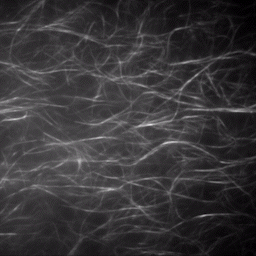Monday, 11 October 2021
New research has shown how a synthetic self-made fibres can guide molecular movement that can be fuelled by light over long distances, a discovery that could pave the way for new ways to use light as a source of sustainable energy.
Researchers from the University of Nottingham have for the first time used a path of assembled molecules liquids that travelling molecules can be propelled along by light. The research ‘Light-controlled micron-scale molecular motion’ has been published today in Nature Chemistry.
Professor David Amabilino from the School of Chemistry at the University of Nottingham is one of the lead researchers, he explains: “In living organisms, molecular motors travel along specific molecular paths, it is an essential part of cell function. We have shown that a synthetic self-made molecular fibre in a liquid behaves like a path for the movement of a molecular traveller over a distance 10,000 times its length. Light acts as the fuel to encourage the motion, while a molecular switch mixed into the system apparently propels the traveller on its way."
The system emulates, for the first time, movement of the kind taking place along fibres in cells. This is a very exciting discovery as If we can find ways to make use of the light’s potential in this process then it could pave the way for use in light activated medicines, new ways to harness light energy as a source of power and to create new sustainable ways to carry out chemical tasks.
The team used interactions between oppositely charged chemical groups and created motion to this static system by introducing a switching molecule, that flaps back and forth quite quickly, into the fibres. Shining a light onto this weakens the traveller molecules interaction with the path as they move along it, which can be at some distance. If the molecule were our size, they would move the equivalent of 10 km.
Heat is released when the switching molecules are irradiated, and that heat has a local effect that helps the traveller move, so the mechanical movement of the switch, and the heat that is released when it does, are important for making the system work.
The technique the team used to observe these effects is a special optical microscope that allowed the simultaneous exciting of the molecules – making them move – and observation of them as they give light back out (the travelling molecules are fluorescent).
Co-author on the study Mario Samperi adds: “The system we have prepared is very sensitive to the solvent in which the fibres are formed. In a liquid about the strength of strong whisky, the travelling molecules move along the fibres to another location, whereas when the liquid is the strength of weaker limoncello, rings of rearranged fibres are formed where the travellers have moved along and incorporated into the newly formed circular track.
We want to be able to transport other molecules from one place to another in a controlled way, so that the travelling molecules can carry a package from one place to another, emulating nature, but using light as energy.”
 Image taken from light molecule study
Image taken from light molecule study
Story credits
More information is available from Professor David Ambilinio at David.Amabilino@nottingham.ac.uk
Main image courtesy of Mònica Amabilino i Pérez.
Notes to editors:
About the University of Nottingham
Ranked 97 in the world and 17th in the UK by the QS World University Rankings, the University of Nottingham is a founding member of Russell Group of research-intensive universities. Studying at the University of Nottingham is a life-changing experience, and we pride ourselves on unlocking the potential of our students. We have a pioneering spirit, expressed in the vision of our founder Sir Jesse Boot, which has seen us lead the way in establishing campuses in China and Malaysia - part of a globally connected network of education, research and industrial engagement.
Nottingham was crowned Sports University of the Year by The Times and Sunday Times Good University Guide 2024 – the third time it has been given the honour since 2018 – and by the Daily Mail University Guide 2024.
The university is among the best universities in the UK for the strength of our research, positioned seventh for research power in the UK according to REF 2021. The birthplace of discoveries such as MRI and ibuprofen, our innovations transform lives and tackle global problems such as sustainable food supplies, ending modern slavery, developing greener transport, and reducing reliance on fossil fuels.
The university is a major employer and industry partner - locally and globally - and our graduates are the third most targeted by the UK's top employers, according to The Graduate Market in 2024 report by High Fliers Research.
We lead the Universities for Nottingham initiative, in partnership with Nottingham Trent University, a pioneering collaboration between the city’s two world-class institutions to improve levels of prosperity, opportunity, sustainability, health and wellbeing for residents in the city and region we are proud to call home.
More news…